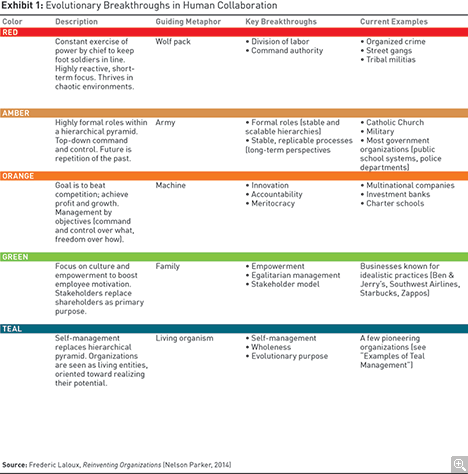3 Ways to Improve Work Performance With Integral Theory
We’ve all read articles in the last few years that try to make sense of drastic changes taking place in the business world.
 This New Paradigm Shift Will Affect All Companies
This New Paradigm Shift Will Affect All Companies
How is one suppossed to adapt and thrive to an ever changing workplace? With the growing prominence of start-ups and shrinking of some corporate giants, everyone is wondering what impact these changes will have. Are start-ups and the way they disrupt traditional corporate structure the new norm? And how do companies adapt to these changes and use them to become even better than before?
To understand these changes, CommandHound took a look at a few of the new and emerging organizational theories and synthesized some interesting tips on ways to improve work performance in this new world.
The Integral Theory
Ken Wilber’s Integral Theory, also known as a “theory of everything,” has been making headlines since the 1970s. The Integral Theory works to unify a variety of social and organizational trends under one model, showing that organizations and social groups have steadily changed structures following a certain pattern since the beginning of human history.
The image below shows how human social groups and companies have progressed over time, starting with Red organizations that value authoritarian power to accomplish short-term goals. As organizations progress in this theory, they develop the ability to plan further in advance and take into account more of the broader implications of their work on the individuals and society closest to them.
 Summary of Ken Wilber’s Integral Theory
Summary of Ken Wilber’s Integral Theory
Frederic Laloux, who has written extensively on this theory and its implications for corporations, believes that the current corporate world is mostly made up of a mix of Orange and Green organizations, where the Orange has a more traditional corporate culture that focuses on hard metrics to “get ahead” and the Green places social responsibility at a high premium and values soft qualities like teamwork to succeed.
That said, many experts are now saying that the next paradigm has arrived, and that Teal companies are set to become the new norm. Teal organizations have three defining features:
- Self-management: Teal organizations value giving individuals power and control over their own domain, leading to an increased sense of accountability for one’s own work.
- Wholeness: Teal groups try to support the individual as a whole, rather than as just a professional entity.
- Evolutionary purpose: Teal organizations remain agile in an ever-changing world, responding to changes in the market and desires of their customers more quickly than Orange or Green groups.
Developing these ways to improve work performance in your team or business will allow you to dominate the field and more effectively navigate the changing corporate world we live in.
How to Succeed in the Teal World
Frederic Laloux suggests that there is really only one factor necessary to develop a Teal organization, and that is buy-in from top leadership. The company’s chief executive, his or her supporting team, and the company’s board all need to embrace the new focus on accountability, wholeness, and agility. This will make the rest of the company more likely to respond to changes.
 Inject Accountability to Thrive in the New Work Environments
Inject Accountability to Thrive in the New Work Environments
There are a few tools that will make this change easier to implement once the top leadership is on board.
- Hiring a human resources department and office manager who successfully understand the drive to wholistically support employees. This can manifest itself in fun office programs and outings, competitive benefits that cover all basic employee needs, and direct and frequent recognition for performance.
- Developing a company policy that updates all employees on agile methodologies and the importance of remaining open to change. If the company is going to successfully keep an eye on its evolutionary purpose, it needs to have all employees open to quick changes.
- Use an accountability software solution like CommandHound that effectively manages employee tasks and monitors progress. This software will prevent management from needing to micromanage, and will make employees feel like their hard work and deliverables are appreciated, accurately monitored, and recognized.
All of these ways to improve work performance will make sure that your company embraces the new paradigm and dominates the new professional landscape. To learn more about accountability and how to take the first step toward transforming your team, create a CommandHound account today:
